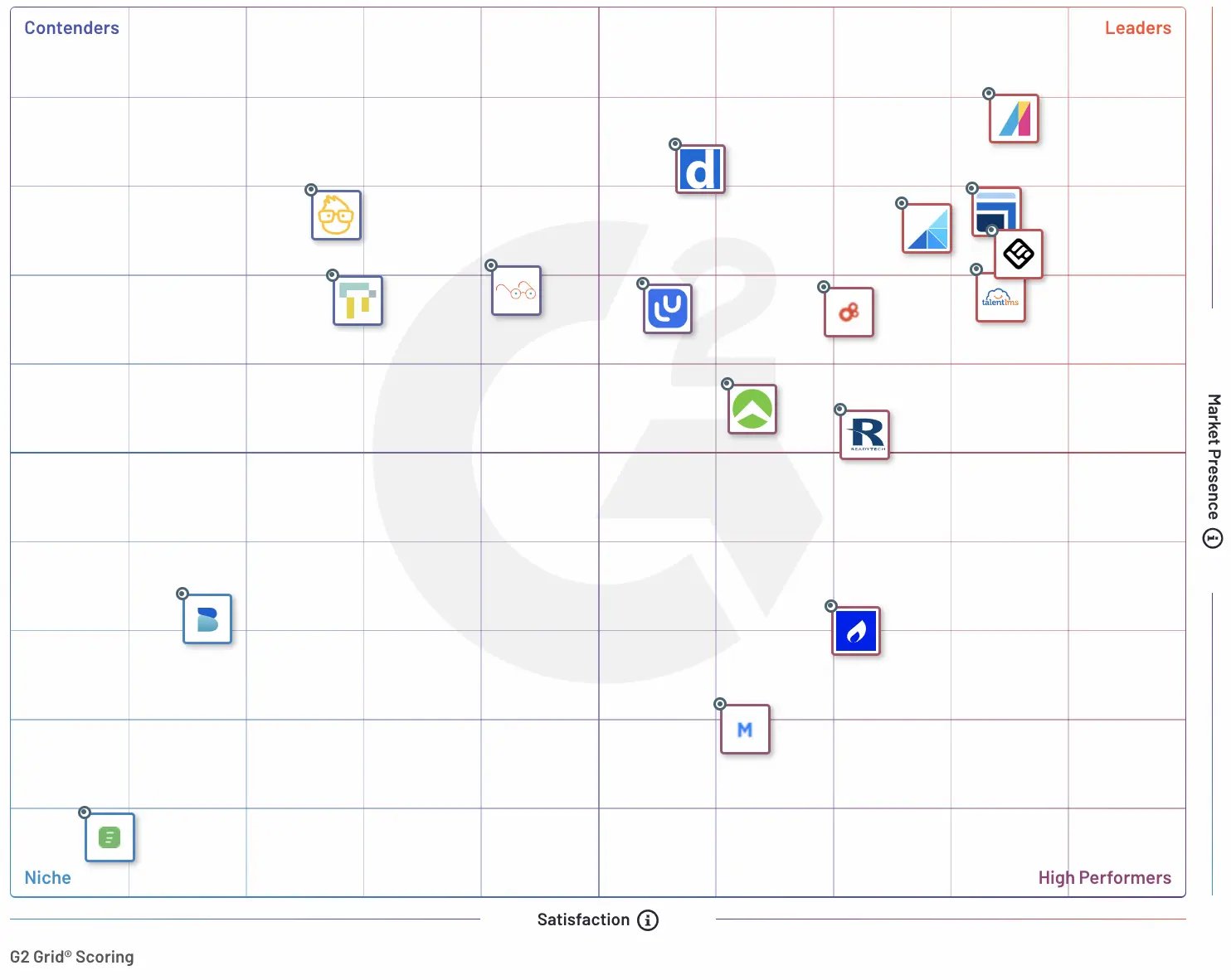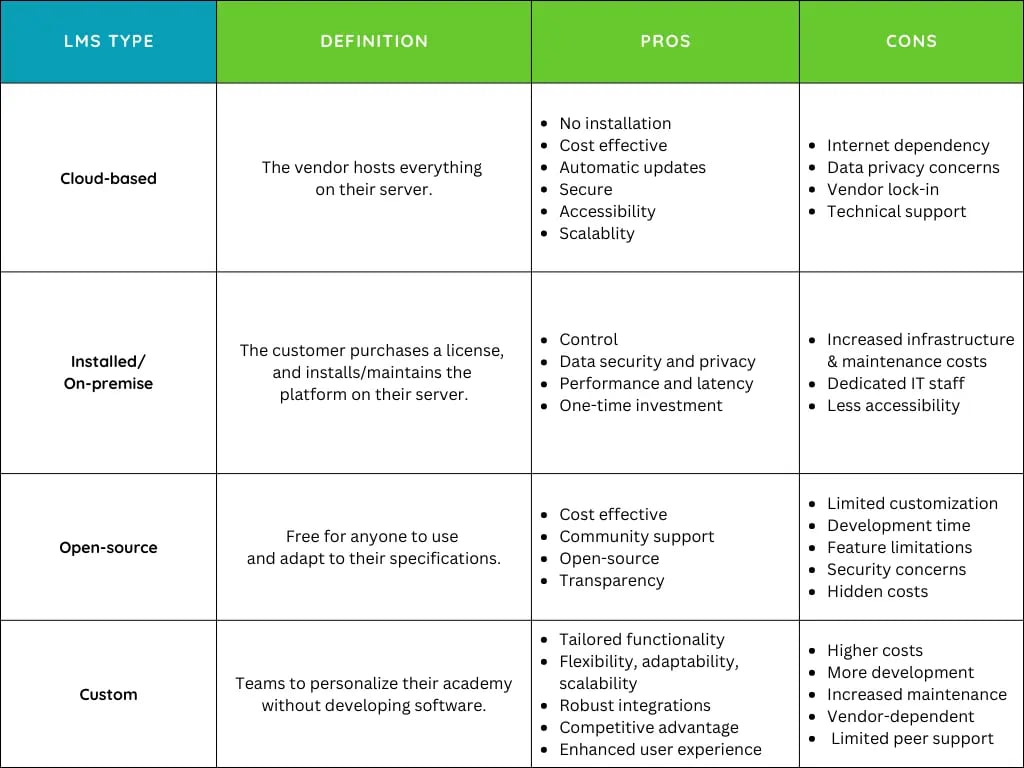

Northpass is now Gainsight Customer Education.
For all of the latest on our customer onboarding and training solutions, check out Skilljar by Gainsight.

For all of the latest on our customer onboarding and training solutions, check out Skilljar by Gainsight.
Jump to Content
What's a Customer Training Platform?
A customer training platform or learning management system (LMS) is a software application for managing and delivering digital customer education programs. Customer education platforms help companies—primarily those in B2B—effectively and efficiently deliver the educational content their customers need to unlock their product or service's full potential.
Many customer training platforms exist on the market today, but they don't all fit in the same box.


How do you know which type of customer education LMS is best for your program? Here are a few factors to consider:
At the end of the day, picking the customer training platform type that's right for you comes down to budget and control.
Here are a few of the best product and customer training platforms available to companies in 2023:
So, what are the benefits of product and customer training platforms? There's a long list, but here are the highlights:
The outcomes and benefits of a digital customer education program are impossible to ignore. But how do you put it into practice? How, exactly, can you apply a customer education platform to the customer journey?
Overall, digital customer education improves the customer experience, which is more important now than ever.
Companies with a customer experience mindset drive revenue 4-8% higher than other companies in their industry.
Companies that lead in customer experience outperform laggards by almost 80%.
Almost 100% of customers say customer service is important in their choice of brand loyalty.
More than 75% of consumers say inefficient customer experiences detract from their quality of life.
Loyal customers are 5x more likely to purchase again and 4x more likely to refer a friend to the company.
Consumers will pay 17% more to purchase from a company with a reputation for great service.
For a digital customer education program to thrive with a product and customer training platform, stakeholders across the company need to be involved in the RFP process, implementation, and ongoing delivery.
While no two customer education programs are the same, a few key roles will almost always be involved:
This person is responsible for getting leadership buy-in and the RFP. They also lead the charge during implementation and are responsible for ensuring the program's success.
The executive sponsor guides the greater team to ensure the program aligns with the business’s strategic priorities—now and in the future.
The subject matter expert (SME) ensures the learning content meets customers' needs and addresses key pain points (and is delivered in the format that drives the most engagement).
The instructional designer translates the concepts into content and courses that enable your customers to learn and retain critical information.
The technical lead will be involved heavily during implementation to ensure data is flowing, integrations are working, etc. They'll also ensure the platform's backend keeps pace with the evolving needs of the program.
Building a product education program is easiest when you use a high-quality training management platform. You can improve your odds of success even further by sticking to the tried and true steps to turn your product education objectives into reality.
First, your product training strategy needs a purpose. What kind of business outcomes are you hoping for? What kind of experience do you want your learners to have? The answers to these two questions are often intertwined. When customers are given opportunities to succeed with your products, it nearly always translates to better business performance.
To deliver content that’s fully relevant, you should strive to understand exactly who the users of your academy are. Developing a user persona can be very helpful for designing courses that appeal to your target audience specifically.
Before you create the actual content of your courses, you should create a roadmap that lays out what modules your course will include and how users will progress through it. This usually involves brainstorming the best course structure for achieving your objectives from step one. By planning out your course in its entirety before you start designing content, you can ensure all your content works together toward the end goal. This is where you should pull out all your best content strategies, such as leveraging interactive training ideas.
Next, you should build the actual content of your course. This will probably be the most time-consuming step, and it’s also one of the most important. The effectiveness of your product education depends on the quality of your training content. To simplify this step, ask yourself if there’s any content you’ve already created that you can republish as part of your course. This can save you time and effort and make your past content more accessible.
Now you need to deliver your training course to your learners. The content needs to be easy to find to have the maximum benefit. One of the best ways to organize your software training courses or other product information is to use a training management platform. A dedicated platform can make it possible to store all your product content where it’s easily accessible to users from a central location.
The last step of building a product training course is to measure its impact after launching it. By using an LMS to track the behavior of online learners taking your course, you can develop a better understanding of what your learners need. Then, you can adjust your course to meet those needs.
Thank you.